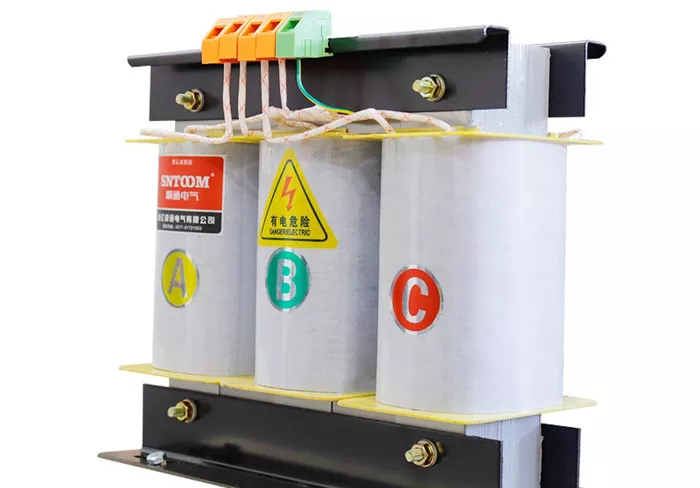Secondary voltage is a fundamental concept in the operation of transformers and plays a crucial role in the efficient transmission and utilization of electrical power. Understanding the secondary voltage helps in designing, operating, and maintaining electrical systems effectively. This article will delve into the details of secondary voltage, including its definition, calculation, importance, and practical applications.
Basic Principles of Transformers
A transformer is an electrical device that transfers electrical energy between two or more circuits through electromagnetic induction. It consists of two or more windings wrapped around a magnetic core. The primary winding receives the input voltage (primary voltage), which generates a magnetic field. This magnetic field induces a voltage in the secondary winding, known as the secondary voltage. The ratio of the number of turns in the primary winding to the number of turns in the secondary winding determines whether the transformer steps up (increases) or steps down (decreases) the voltage.
Definition and Calculation of Secondary Voltage
Secondary voltage refers to the voltage induced in the secondary winding of a transformer. It is the output voltage that can be used for various purposes, depending on the transformer’s application. The secondary voltage is directly influenced by the primary voltage and the turns ratio of the transformer.
Importance of Secondary Voltage
Adaptation to End-Use Devices
Different electrical devices and systems require specific voltages to operate efficiently. Transformers ensure that these devices receive the appropriate voltage by stepping it up or down as needed. For example, residential appliances typically operate at 120 volts or 240 volts, while industrial machinery may require higher voltages such as 480 volts.
Energy Efficiency
By adjusting the voltage levels for transmission and distribution, transformers minimize energy loss, ensuring efficient delivery of electrical power over long distances. This is particularly important in power distribution systems where high-voltage transmission lines are used to reduce energy losses due to resistance.
Safety
Appropriate voltage levels are critical for safety in electrical systems. Transformers help manage these levels to prevent overvoltage, which can damage equipment and pose safety hazards. For example, stepping down high-voltage transmission lines to safer levels for residential use ensures that electrical devices are not subjected to dangerous voltage levels.
Versatility
The ability to adjust secondary voltage makes transformers versatile components in various applications, from residential power supply to industrial machinery and renewable energy systems. This versatility allows transformers to be used in a wide range of applications, making them essential components in modern electrical systems.
Factors Affecting Secondary Voltage
Load
The secondary voltage can vary depending on the load connected to the transformer. Under heavy loads, voltage drops can occur due to the internal impedance of the transformer. This is because the transformer’s internal resistance and reactance cause a voltage drop when current flows through it.
Core Losses
Magnetic core losses, due to hysteresis and eddy currents, can slightly affect the secondary voltage, especially in high-frequency applications. These losses are inherent to the transformer’s design and can impact the overall efficiency and voltage output.
Temperature
Changes in temperature can alter the resistance of the winding materials, thereby affecting the secondary voltage slightly. Transformers are designed to operate within specific temperature ranges to minimize the impact of temperature variations on their performance.
Supply Voltage Fluctuations
Variations in the primary voltage directly influence the secondary voltage. Stable supply voltage is crucial for maintaining consistent secondary voltage. Transformers are designed to handle a certain range of input voltage fluctuations, but significant deviations can affect the secondary voltage.
Applications of Secondary Voltage
Power Distribution
Transformers step down high transmission voltages to lower levels suitable for residential and commercial use. For instance, a typical distribution transformer might step down 11 kV (primary voltage) to 240 V (secondary voltage).
Industrial Applications
Many industrial machines require specific voltages, which are provided by transformers designed for those voltages. For example, machinery may need 480 V, stepped down from higher distribution voltages.
Renewable Energy Systems
In solar and wind energy systems, transformers convert the generated voltage to levels suitable for grid distribution or direct use. This ensures that the electrical energy produced by renewable sources can be effectively integrated into the power grid.
Isolation
Isolation transformers provide a secondary voltage identical to the primary voltage but isolated for safety and noise reduction in sensitive equipment. This is particularly important in applications where electrical isolation is required to prevent ground loops and other interference.
Electronics
Small transformers in electronic devices step down mains voltage to low voltages required by circuits and components, such as 12 V or 5 V. These transformers ensure that electronic devices receive the appropriate voltage levels for safe and efficient operation.
Practical Considerations in Transformer Design
Turns Ratio
Selecting an appropriate turns ratio is crucial for achieving the desired secondary voltage. Engineers must carefully consider the application requirements and design the transformer accordingly.
Winding Material
Using high-quality materials to minimize losses and ensure reliable operation is essential. The choice of winding material can significantly impact the transformer’s efficiency and longevity.
Core Design
Choosing core materials and designs that minimize losses and accommodate the required power levels is important. The core design affects the transformer’s overall performance and efficiency.
Thermal Management
Ensuring adequate cooling to maintain performance and longevity under various operating conditions is a critical aspect of transformer design. Proper thermal management helps prevent overheating and extends the transformer’s lifespan.
Insulation
Providing sufficient insulation to handle the voltage levels safely and prevent breakdowns is essential. Proper insulation ensures that the transformer operates safely and reliably under all conditions.
Conclusion
Secondary voltage is a fundamental concept in the operation and application of transformers, playing a critical role in the efficient and safe distribution of electrical power. Understanding the principles, calculations, and factors influencing secondary voltage is essential for engineers, technicians, and anyone involved in the design and maintenance of electrical systems. As technology advances, the continued innovation in transformer design and functionality promises to enhance the reliability and efficiency of electrical power systems worldwide.
Related Topics:

